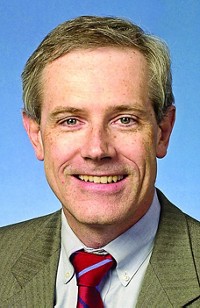Advertisement
Grab your lab coat. Let's get started
Welcome!
Welcome!
Create an account below to get 6 C&EN articles per month, receive newsletters and more - all free.
It seems this is your first time logging in online. Please enter the following information to continue.
As an ACS member you automatically get access to this site. All we need is few more details to create your reading experience.
Not you? Sign in with a different account.
Not you? Sign in with a different account.
ERROR 1
ERROR 1
ERROR 2
ERROR 2
ERROR 2
ERROR 2
ERROR 2
Password and Confirm password must match.
If you have an ACS member number, please enter it here so we can link this account to your membership. (optional)
ERROR 2
ACS values your privacy. By submitting your information, you are gaining access to C&EN and subscribing to our weekly newsletter. We use the information you provide to make your reading experience better, and we will never sell your data to third party members.
Synthesis
E. V. Murphree Award in Industrial & Engineering Chemistry
January 29, 2007
| A version of this story appeared in
Volume 85, Issue 5
Sponsored by ExxonMobil Research & Engineering Co. and ExxonMobil Chemical Co.
As a boy, Wolfgang F. Hülderich, 60, had interest in all things explosive and stinky. His first experiments were performed in his grandmother's basement, and her garden was used as "a place for launching self-constructed rockets." It was this freewheeling spirit that led Hülderich to pursue a career in chemistry along a path that led him to academia, to industry, and back again to academia.
HÖlderich has spent his career straddling-and uniting—the worlds of industry and academia. He received a master's degree in chemistry in 1972 from the University of Karlsruhe, in Germany, and a Ph.D. in 1975 from the university's Institute of Inorganic Chemistry. HÖlderich then became a postdoc at Massachusetts Institute of Technology on a National Science Foundation/North Atlantic Treaty Organization Fellowship in 1976.
In 1978, he started a 14-year career with BASF, in Ludwigshafen, Germany, where he held several leadership positions in the area of heterogeneous catalysis research. Hülderich transitioned back into academia in 1992 and is currently university professor and director of the department of chemical technology and heterogeneous catalysis at RWTH Aachen University of Technology, in Germany.
"It is difficult to succeed both as a prolific industrial inventor and as a noted academic in one life span," says L. Louis Hegedus, recently retired senior vice president of R&D for Arkema and a C&EN adviser. But Hülderich has done just that, racking up a number of impressive accomplishments along the way.
Hülderich completed undergraduate work and received his master's degree in only four years. That swiftness contrasts with the average stint of six to seven years at that time in Germany. While working toward his Ph.D., he was able to revisit the interests of his youth, working with "stinky and explosive compounds such as phosphines, silylphosphanes, boranes, and phosphinoboranes," he says.
Hülderich first gained interest in heterogeneous catalysis when he moved into industry at BASF. While there, he was the lead inventor for many BASF patents and developed aggressive, successful patenting strategies. Hülderich says his success in zeolite chemistry and the industrialization of new processes increased his interest in the field and his knowledge of chemical engineering. "It is still fascinating and fulfilling to see how processes can be commercialized and how lab-scale experiments can be transformed to large-scale units," he adds.
Hülderich then took his interest and knowlege of heterogeneous catalysis back to academia, starting up a world-class catalysis research institute at Aachen. In this continuing role, he has presented hundreds of lectures at international catalysis conferences. He has authored more than 250 papers, holds over 200 patents, and has been an author or editor of four books in the field of heterogeneous catalysis.
He has also acted as a conduit between industry and academia by serving as a consultant for chemical, petrochemical, and pharmaceutical companies throughout Europe, Japan, and the U.S. In collaboration with Tokyo-based Sumitomo Chemical, he was heavily involved in the development of a process for the production of caprolactam, the monomer that polymerizes into nylon 6. The process, for which Hülderich was granted the basic patent, unfolds via the Beckmann rearrangement of cyclohexanone oxime catalyzed by an extremely weakly acidic pentasil zeolite. The transformation is carried out in a novel fluidized-bed reactor with continuous catalyst regeneration and was commercialized in Japan by Sumitomo.
It is perhaps Hülderich's own words that best reveal the reason for his success as an innovator: "You have to observe carefully and be persistent in following ideas even when first experiments fail. If you get an unexpected result, follow the new direction rather than throwing your data away."
The award address will be presented before the Division of Industrial & Engineering Chemistry.






Join the conversation
Contact the reporter
Submit a Letter to the Editor for publication
Engage with us on Twitter